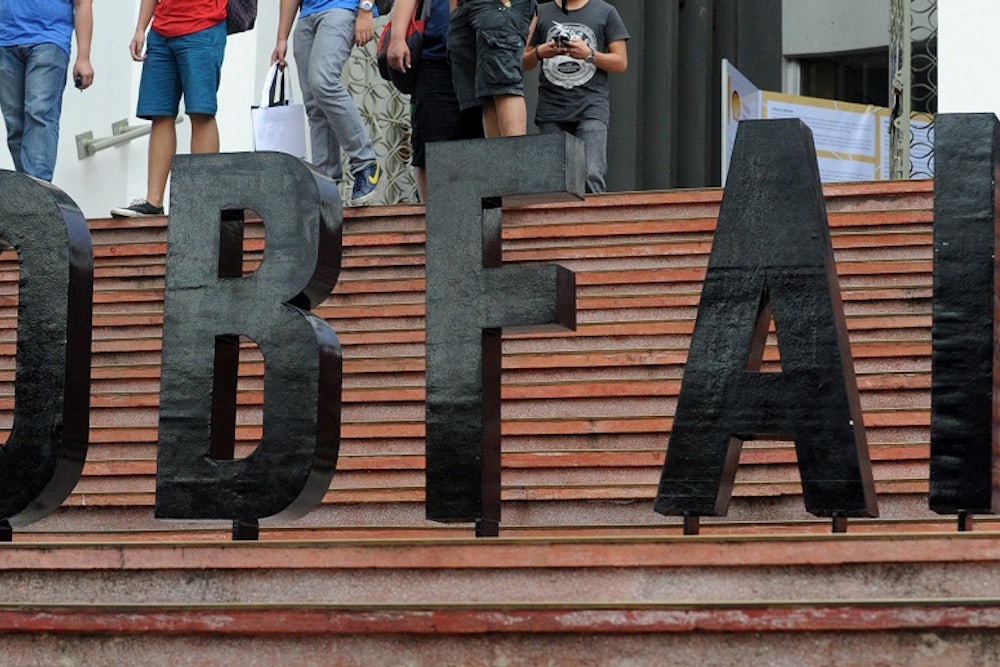The Bureau of Labor Statistics released the March jobs report on Friday morning and the economy continues to show steady improvement, adding 192,000 jobs last month. This was slightly below projections of 200,000. The unemployment rate was unchanged at 6.7 percent and the labor force participation rate ticked up for the second consecutive month to 63.2 percent, from 63 percent.
The labor force growth is particularly good news. The household survey—which is the part of the report that measures directly from households—found that the labor force grew by 503,000 in March, a strong number. The past two months have shown hints that the strengthening economy will convince discouraged workers to reenter the labor market. That’s one of the reasons that the lack of movement in the unemployment rate over the past few months is not a bad sign, as long as it comes with positive employment growth:

Economists had projected a year of stronger growth at the start of 2014 thanks to reduced fiscal headwinds. But throughout January and February, the economic data proved weak and worries grew that growth would once again fall short of expectations. Those concerns do not seem to have played out. An unusually cold and nasty winter seems to have been a major contributor to the weak data, shutting some major U.S. cities down for days at a time.
But while the nearly 200,000 jobs is a welcome development, the recovery has still not hit second gear. Month-to-month jobs reports contain a lot of noise as the sampling error is high and revisions can change the numbers significantly. One way to filter out some of that noise is to use a three-month moving average. As you can see, job growth has fluctuated between 150,000 and 200,000 jobs for years now:

One other statistic that economists are watching closely is wage growth. As the labor market tightens, employers will have to raise wages to compete for scarce labor. Economists have been debating for months the tightness of the labor market. The argument centers around the long-term unemployed and the millions of workers who have dropped out of the labor force. One side believes that the long-term unemployed have become disconnected from the labor market, as employers will very rarely hire them. In this case, the short-term unemployment rate, which has already returned to its pre-recession level, is a better indicator of the state of the labor market. The other side argues that the unemployment rate is not representative of the labor market and that many discouraged workers will begin searching for jobs again as the economy recovers.
This jobs report bolsters the second theory, as wage growth actually fell slightly in March. This indicates there is still slack in the labor market and the Fed’s loose monetary policy will continue to bolster it.
Nevertheless, the 3.7 million long-term unemployed, little changed from 3.8 million in February, continue to be a national crisis that is not receiving enough attention. These workers, who have similar characteristics and experience as the short-term unemployed, have been out of work more than six months. Research shows that employers discriminate against them, passing over their resume even if they have the requisite experience. The human costs of long-term unemployment are devastating, including negative health effects and higher suicide rates. As the labor market continues to recover, economists will be watching closely to see if employers begin hiring the long-term unemployed. If not, Congress will have to pass targeted policies to convince employers to do so—or else we may lose these able-bodied workers to permanent unemployment forever.
